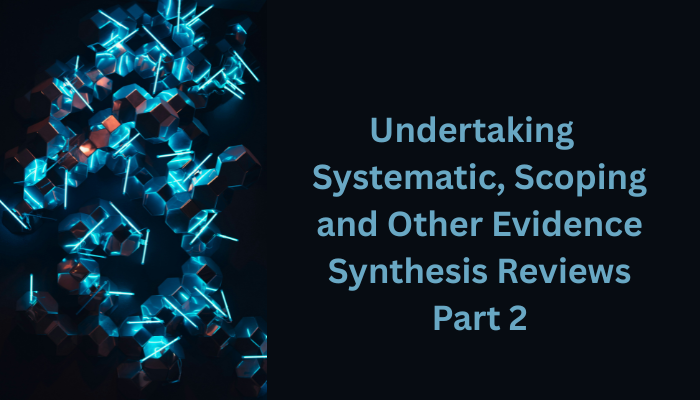
The final review should mirror the protocol, indicating that it was followed.
Use supplementary files for additional information, including search details, critical appraisal tables, etc.
The final presentation involves reporting on all facets of the process, including:
 Navigate the maze of evidence synthesis including systematic reviews, scoping reviews, and more.
Navigate the maze of evidence synthesis including systematic reviews, scoping reviews, and more.
Part II covers the later stages of the evidence synthesis review including critical appraisal, data extraction, data synthesis and more. The session will also cover useful automation and AI tools. Offered by NSLHD Libraries in conjunction with RNS ICU Research’s A/Prof Rosalind Elliott.
The content of the Overview class and Part I is assumed knowledge for this class.
Watch a recording of this class or see upcoming training in the NSLHD Libraries intranet calendar.